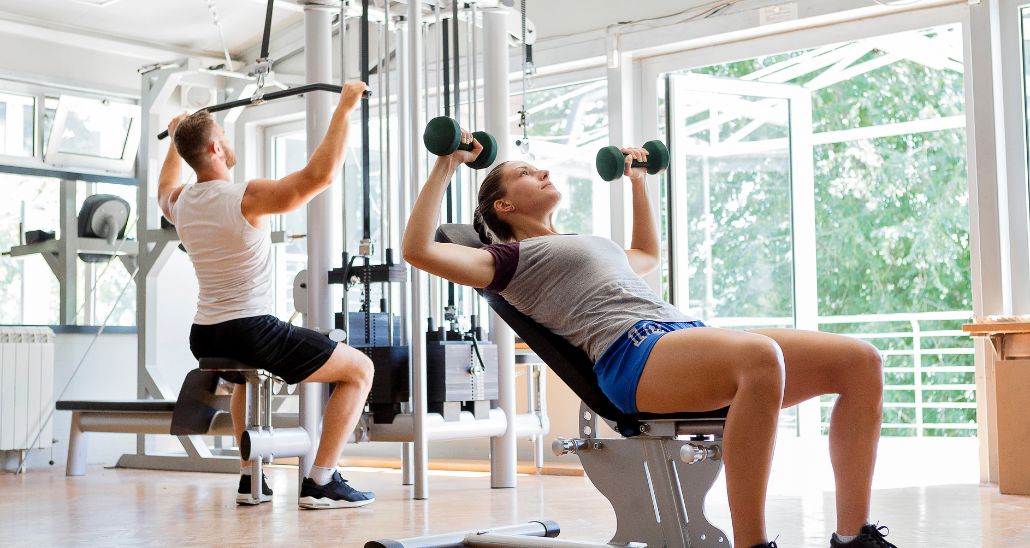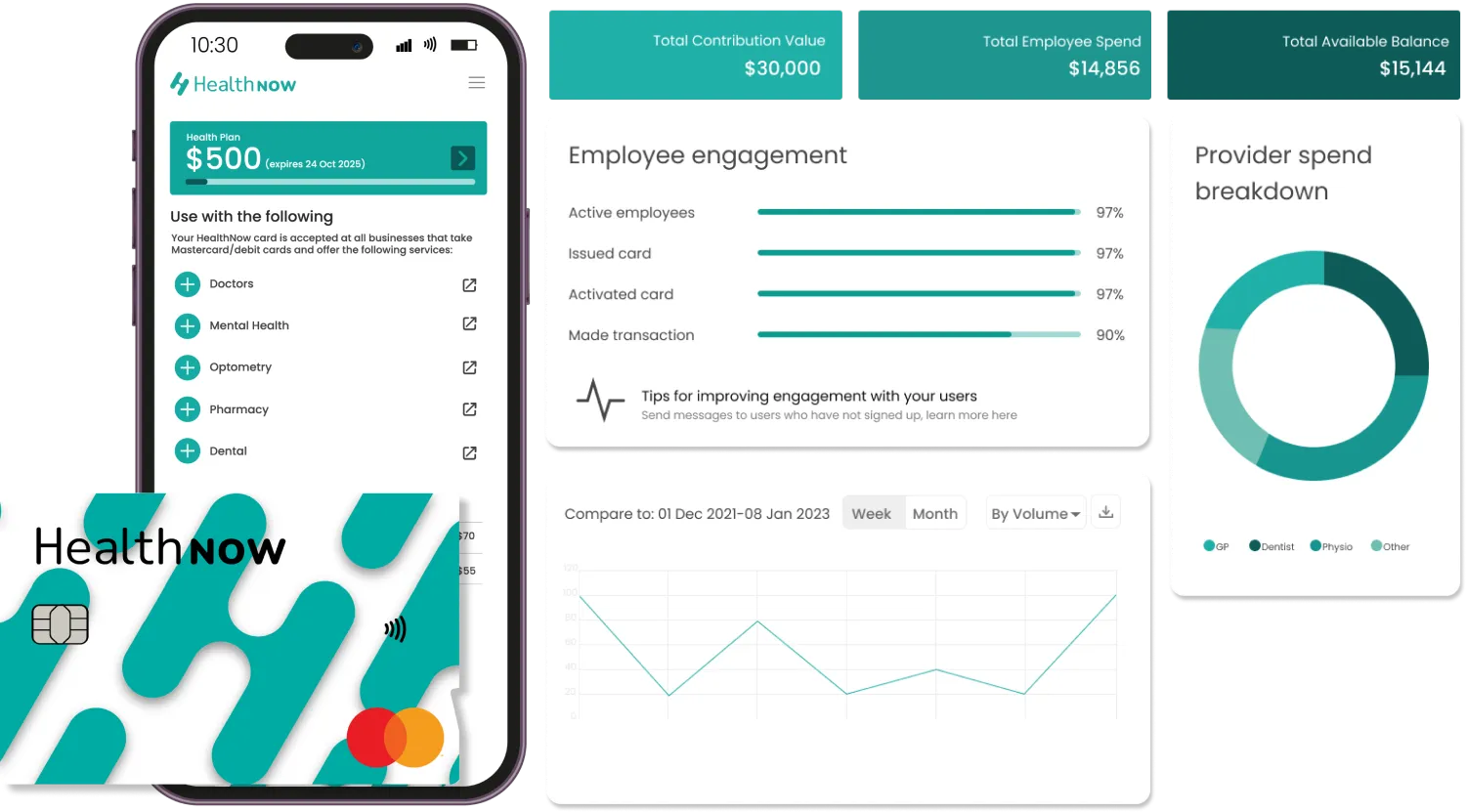Whether it’s a planned vacation or an unexpected period of sickness or self-isolation, getting back to exercise or rejoining your friends at the gym is something that many people look forward to a lot, giving them a much-needed physical and mental boost. Unfortunately, many people take a ‘pick up where we left off’ mentality when it comes to returning to exercise – and it’s coming at a painful cost, with more than one third of gym injuries occurring from people overexerting themselves.
During a break from exercise you lose strength, fitness, and coordination, which means you’re more vulnerable to injury if you try to jump right back into your regular exercise routine. So how can you ease back into exercise safely so that you can stay in it for the long-term?
Today, we’re sharing what you need to know about what happens to your body when you’re getting back into exercise, and what you should do if you notice any pain in the process.
The Effects Of A Break From Exercise On Your Body
Stopping exercise affects both your cardiovascular fitness and your strength, which means if you try to do the same activities you did before, at the same intensity you did before, you’re more likely to be unsuccessful, and injure your muscles, ligaments or joints.
Studies show that your cardiovascular fitness can drop noticeably within just two weeks of inactivity. As a result, you may notice yourself getting more puffed than you’re used to when running up the stairs because your heart has to work harder to get enough blood to your muscles. And unfortunately, you’re more likely to lose your cardio fitness more quickly if you’re already athletic or a regular gym-goer.
Similarly, when it comes to your muscle strength, your muscle mass can decrease in as little as two weeks of rest. Muscles become weaker when you’re not using them as much as before, whether that’s through not lifting weights at the gym or using your muscles less while at home.
What About COVID?
The rollercoaster of the COVID-19 pandemic over the last two years has meant that more people than ever before have been forced into lockdown or isolation in their homes with make-shift gyms in their living rooms, less than ideal equipment, and no one to help prevent injury through correcting their technique. That is, if they’ve had a chance to exercise at all between caring for children while working from home – studies show that over the pandemic, physical activity decreased by as much 57%.
For those that have contracted the COVID-19 virus, whether mild, moderate or severe, exercise has likely been out of the question, with experts recommending a minimum of “two-weeks of self-isolation and rest from exercise, followed by a gradual return to exercise under the guidance of a medical team for athletes who have tested positive for COVID-19”. These experts go on to recommend that these patients have a medical assessment and rehabilitation plan with specialists such as exercise physiologists and physiotherapists before they return to exercise at all.
Easing Back Into Exercise – Slow And Steady Wins The Race
The biggest thing to stay mindful of is that your fitness capacity and strength capacity is likely to have decreased after a break – and even more so, the fitter that you were. So what does that mean for when we return to exercise?
- Stay mindful of your technique, and get help or approval where possible
Work with your physiotherapist or exercise physiologist to assess your body and learn techniques that support your current musculoskeletal health. Where possible, use a mirror or ask a workout buddy to examine your own technique and make corrections. Your physio or exercise physiotherapist can run through all the movements and gym equipment with you and provide feedback.
- Start by establishing a new (lower) baseline
Starting back at your previous benchmarks is the key ingredient in the recipe for pain and injury when returning to exercise. Forget all the weights, distances or speeds you could do before your break – they are no longer your benchmark. Set new baselines that you can complete comfortably and work back up slowly and gradually from there – a good rule of thumb is to start at 50% of your original level, and aim to increase your output by no more than 10% per week.
- Manage your expectations by listening to your body
After a break, your body isn’t as fit, strong, or flexible, and you may have put on weight – all of which is completely normal. This means you’re going to have to manage your expectations. Planned a 5k run but can only manage 2k? That’s absolutely fine. Your body is your best form of feedback, so don’t push yourself past what feels comfortable. You can feel exhausted, but you should never feel pain or discomfort. If you’re getting any pain or aches, stop immediately and seek support.
- Retrain for sports, even if you’ve maintained your cardiovascular fitness
Sports place different and intense demands on our bodies – from rapid stops and starts, to quick changes in direction, to powering through a jump. Get back to the basics and retrain for the demands of your sports – even if it’s with simple ankle strengthening and proprioception exercises. Work with your exercise physiologist to introduce specific sports tailored exercises back into your routine.
- Get back into good habits
This means having a proper warm-up and stretching routine, cooling down effectively, fueling your body well, staying hydrated, and having the correct and supportive footwear and joint or muscle supports prescribed by a physiotherapist, to prevent or manage injuries.
- Request an injury prevention screening
One way exercise physiologists can help people return to exercise safely is by having injury prevention screenings. These screenings are completed with your physio, and involve a comprehensive assessment that looks at the physical health of your feet and legs, and assesses your footwear. Your physio can then identify your risks when exercising and put the right prevention measures in place to help reduce your risk of injury or manage an injury moving forward.
Get Back Into Exercise With The Support Of A Medical Team Without The Upfront Cost
With many people finding themselves in pain or difficulty when returning to the gym after a period of isolation, illness or holiday, the support of a physiotherapist or exercise physiologist is becoming more important than ever before. Unfortunately, many people don’t have the available funds to cover an unplanned healthcare appointment. This is where New Zealand’s first Buy Now, Pay Later (BNPL) platform, HealthNow, is dedicated to bridging the gap between a person’s health and the money they have in their bank account – at absolutely no cost to New Zealand health consumers. This is a big change from traditional BNPL services that charge users interest on their purchases, hiking up the cost of their purchases and leaving them with less money to put towards their health each month.
HealthNow is accessed as a free app, splitting the total cost of your healthcare service or appointment, including physiotherapist or exercise physiologist treatments, over up to six weeks, so the amount you have to pay on the day you order your treatment is a fraction of the total price. With your provider getting paid in full on the day by HealthNow, it’s a win-win for all.
Starting with HealthNow is free and easy – just sign up on the app and start using it to pay for your health products and services. You can also check out HealthNow’s full benefits and features, including a health wallet to store funds set aside for health services that can be contributed to by others including your employer.
References:
- https://www.ncbi.nlm.nih.gov/pmc/articles/PMC5005555/
- https://pubmed.ncbi.nlm.nih.gov/3944049/
- https://www.medibank.com.au/livebetter/be-magazine/exercise/how-long-does-it-take-to-lose-your-fitness/
- https://www.abc.net.au/news/health/2017-04-09/how-long-does-it-take-to-lose-fitness/8426246
- https://pubmed.ncbi.nlm.nih.gov/11474330/
- https://benthamopen.com/ABSTRACT/TOPHJ-13-470
- https://www.ncbi.nlm.nih.gov/pmc/articles/PMC8407897/
- https://www.ncbi.nlm.nih.gov/pubmed/32662058
- https://pubmed.ncbi.nlm.nih.gov/10999420/







